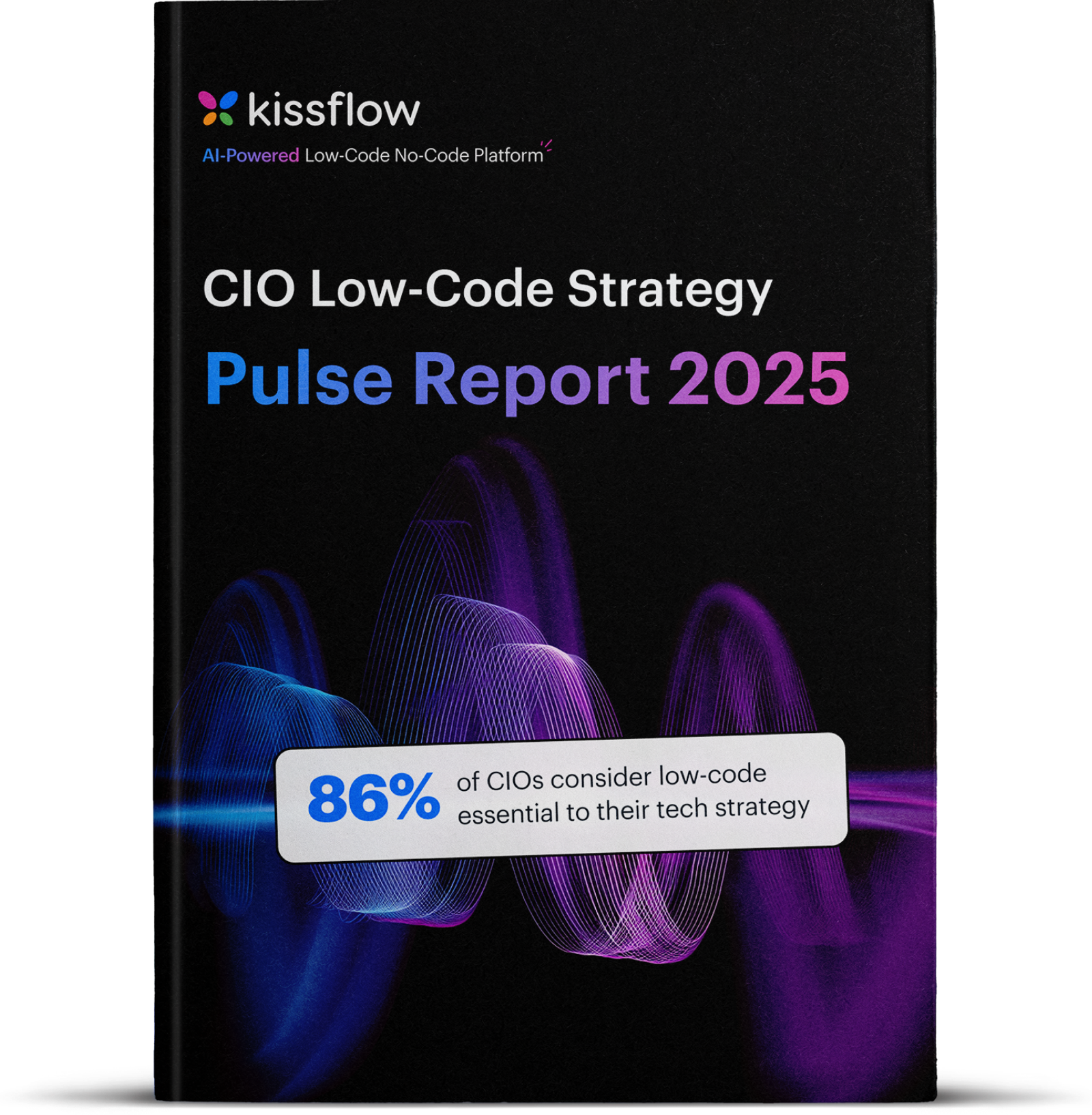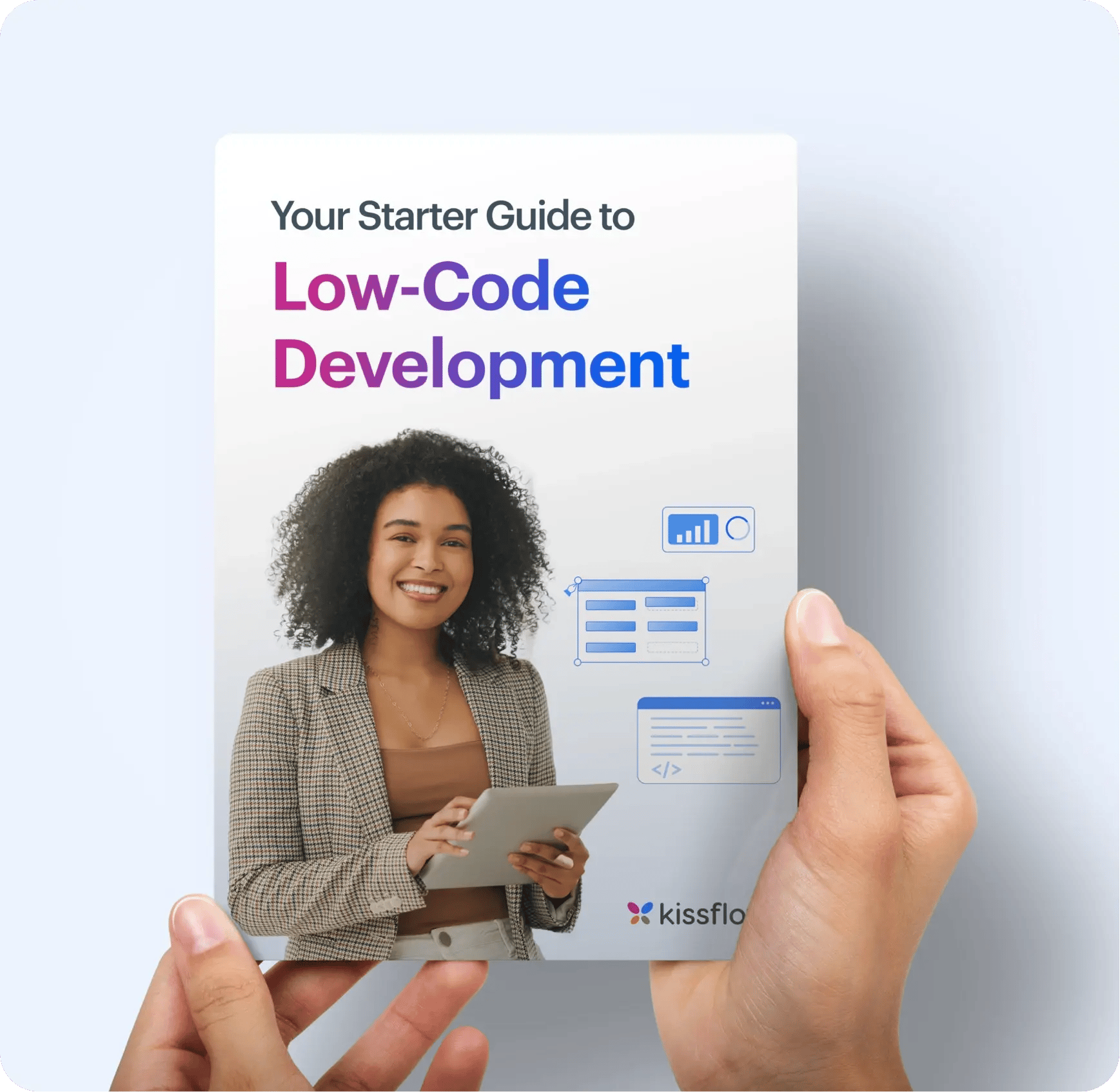
- >
- No-Code Platform >
- Evaluating The Total Cost Of Ownership (TCO) Of No-Code Platforms: A Complete Guide
Evaluating The Total Cost Of Ownership (TCO) Of No-Code Platforms: A Complete Guide
You’ve probably heard the pitch: "No-code platforms will save you money!" However, as any experienced CIO knows, the sticker price is just the story's beginning. When you're considering a no-code solution for your business, you need to look beyond those monthly subscription fees to understand what you're really signing up for.
Let's face it—nobody likes surprise costs that blow up budgets. Understanding the total cost of ownership (TCO) of no-code platforms isn't just smart business—it's essential for making decisions you won't regret six months later.
In this guide, we'll explain TCO for no-code platforms, uncover sneaky hidden costs that vendors don't advertise, and give you a practical checklist for evaluating platforms side-by-side. By the end, you'll have a clear roadmap for calculating true costs and avoiding expensive mistakes.
What does the total cost of ownership mean for no-code platforms?
Think of TCO as the real price tag of your no-code journey—from the day you sign up until years into using the platform. It's not just what you pay now; it's what you'll pay over time.
The problem? Most buyers focus only on the monthly subscription cost. Big mistake. That's like buying a car based only on the sticker price, without considering gas, insurance, maintenance, or resale value.
When evaluating a no code workflow automation platform specifically, these costs become even more critical since workflow automation typically involves multiple integrations, user training across departments, and ongoing process optimization that can significantly impact long-term expenses.
For no-code platforms, TCO includes:
Direct costs:
- License or subscription fees
- User seat pricing
- Storage costs
- API call limits and overage charges
Indirect costs:
- Training and onboarding time
- Integration expenses
- Customization work
- Governance and compliance measures
- Ongoing maintenance
- Scaling expenses as your usage grows
Direct vs. hidden costs: What you're probably missing
Let's break down what you see on the no-code pricing page versus what might blindside you later.
Direct costs (the obvious stuff)
These are the costs you can easily find on a vendor's pricing page:
- Base platform subscription
- Per-user fees
- Standard support packages
- Basic storage allotments
These costs are straightforward but can still vary wildly between vendors. Some charge per app, others per user, and some have complex tiered structures.
Hidden costs (the budget killers)
Here's where things get interesting—and expensive:
1. The learning curve tax
No-code doesn't mean no learning. Your team needs time to master the platform. This invisible cost includes:
- Hours spent watching tutorials
- Productivity loss during adoption
- Internal documentation creation
One retail client told us their team spent an average of 20 hours per person getting comfortcable with their new no-code platform. Multiply that by average salary costs, and you're looking at thousands in hidden onboarding expenses.
2. Integration expenses
Most vendors advertise "easy integrations," but the reality isn't always so simple:
- Custom API connection development
- Connector licenses for premium systems
- Middleware solutions when native connections don't exist
3. The customization trap
No-code is fantastic for standard processes, but what about your unique workflows?
- Consultant fees for complex customizations
- Workarounds for platform limitation
- Design services for better UX
4. Governance gone wild
As no-code usage spreads across departments, costs can spiral:
- Security audits
- Compliance certification
- Policy development and enforcement
- App sprawl management
5. Scaling surprises
What works for 10 users might break at 100:
- Performance optimization
- Additional infrastructure
- Premium features needed at scale
Mark, a digital transformation leader at a financial services firm, shared: "Our no-code platform was perfect for our pilot team of 15 users. But when we rolled it out company-wide, we discovered we needed the enterprise plan with advanced security features—tripling our expected cost." His experience shows that while the benefits of no-code development platform adoption are clear, understanding long-term scalability and pricing is just as important.
Key stats to inform your TCO analysis
|
Area |
Stat/Insight |
|
Development Speed |
No-code/low-code platforms can reduce development time by up to 90 percent. |
|
Cost Savings |
Using no-code for MVPs can cut 30-70 percent of traditional development expenses. |
|
IT Resource Impact |
84 percent of enterprises use no-code/low-code to reduce IT strain and speed up delivery. |
|
Integration Savings |
No-code data integration can lower marketing costs by 64 percent and customer acquisition costs by 41 percent. |
|
Consultant Costs |
No-code platforms reduced external consultant costs by an average of $305,000 in one study. |
|
Onboarding Costs |
AverageThe average organization spends about $1,000 per employee per year on training alone. |
|
Onboarding Overruns |
Businesses can spend up to 30 percent more than planned on onboarding due to training and integration. |
|
Scaling Surprises |
TCO can rise 30-50 percent over five years due to scaling, price increases, and hidden fees. |
|
IT Hiring Savings |
No-code/low-code tools enabled companies to avoid hiring two IT developers, saving $4.4M over 3 years. |
|
Productivity Impact |
More than a third of no-code users save 20-30 hours per month on integration and development. |
Your TCO evaluation checklist
Ready to avoid those costly mistakes? Here's your practical checklist for evaluating the true TCO of a no-code platform:
1. Onboarding reality check
- How intuitive is the platform for non-technical users?
- What training resources are included?
- Is there documentation specific to your use cases?
- How much hand-holding will new users need?
2. Integration investigation
- Which systems must the platform connect with?
- Are those integrations native or custom-built?
- What's the cost of premium connectors?
- Will you need middleware or iPaaS solutions?
3. Customization capacity
- How much of your workflow is "standard" vs. unique?
- Can the platform handle your edge cases?
- What happens when you hit platform limitations?
- Will you need outside help for complex customizations?
4. Governance groundwork
- What security features are built-in vs. add-ons?
- How does the platform support compliance needs?
- What tools exist for app management and oversight?
- How will you prevent shadow IT proliferation?
5. Scaling strategy
- How does pricing change as you add users?
- Are there usage limits that trigger higher costs?
- What performance issues might emerge at scale?
- Will you need to upgrade tiers as you grow?
Pro tip: Create a scoring system for each platform you're considering. Rate them 1–5 on each checklist item, then compare total scores. Don't just look at today's needs—project 12–24 months out based on your growth plans.
How Kissflow keeps TCO in check
No-code companies for cost-effective solutions offer a smart way for businesses to reduce the total cost of ownership and achieve faster results.
At Kissflow, we've built our no-code platform with TTO in mind from day one. We're not perfect (no platform is), but here's how we help keep those hidden costs under control:
- Simplified onboarding: Our intuitive design means teams get productive faster, often within days, not weeks. One manufacturing client reported 75% faster adoption rates compared to their previous solution, saving thousands in training costs.
- Unified platform approach: Rather than cobbling together different tools, Kissflow combines workflow, process management, and collaboration in one place. This integration-by-design approach eliminates many costly connectors and reduces complexity.
- Built-in governance: We've baked governance into the platform core, not as expensive add-ons. This includes role-based access controls, audit trails, and approval workflows that keep your compliance team happy without additional costs.
- Predictable scaling: Our pricing model grows with you in a transparent way, avoiding the "tier shock" that happens when you suddenly need enterprise features. We're upfront about what's included at each level.
- Self-sufficiency focus: We believe your team should be able to handle most customizations themselves. This reduces dependency on external consultants or professional services that can quickly drain budgets.
The bottom line on no-code TCO
Calculating the true cost of a no-code platform isn't just about pinching pennies—it's about making sustainable technology decisions. The platform with the lowest sticker price rarely delivers the lowest TCO.
By evaluating both direct and hidden no-code costs, you can avoid budget surprises and choose a solution that delivers value year after year. Remember that TCO isn't just about minimizing costs but maximizing return on your no-code investment.
Take the time to run the numbers, use the checklist we've provided, and ask tough questions of potential vendors. Your future self (and your finance team) will thank you.
FAQs:
1. What hidden costs should enterprises look for in no-code platforms?
Hidden costs include user-based pricing escalating with adoption, execution charges for workflow runs and API calls, environment costs for dev/test/staging/prod, overage charges exceeding included limits, and premium features requiring expensive add-ons. Integration costs: connector licensing, custom API development, middleware subscriptions, and data transfer charges. Personnel costs: training investments, platform administration FTEs, governance overhead, and consulting fees. Infrastructure costs for hybrid/on-premise: hosting, database licenses, load balancers, backup systems, and security infrastructure. Support and maintenance: premium support subscriptions, platform upgrade testing, and technical debt remediation. External dependencies: third-party service costs, additional tool licenses, and compliance audit costs. Exit costs: data extraction complexity and application rebuilding. Demand transparent pricing models, conduct POC projects measuring actual costs, and negotiate volume discounts with cap clauses.
2. How does TCO compare with custom software development?
No-code typically delivers significant savings. Initial development costs are 5-10x faster, reducing time-to-value from months/years to weeks/months. Citizen developers cost 50-70% less per hour than professional developers. Visual development eliminates infrastructure setup and architecture phases. No-code might cost $10K-$50K versus $100K-$500K+ for custom development. Maintenance costs favor no-code: vendor handles infrastructure and security patching, business users make changes independently, automated testing reduces QA overhead. Custom applications require dedicated teams costing $200K-$500K+ annually. Modification costs favor no-code with business users making changes independently. Total 5-year analysis typically shows 40-60% lower TCO for most business applications. Custom development is competitive only for extreme technical requirements or very large user bases where subscription costs balloon.
3. What impacts long-term maintenance and scalability costs?
Application design quality is the primary driver—well-architected applications require minimal maintenance while hastily built ones accumulate technical debt. Platform compatibility management affects costs—strong backward compatibility enables seamless upgrades. Application portfolio management impacts costs dramatically—uncontrolled proliferation creates overhead while disciplined lifecycle management contains costs. Scaling costs depend on pricing models—per-user becomes expensive at scale, usage-based creates unpredictability. Integration maintenance is ongoing as enterprise systems upgrade. Data volume growth impacts performance and storage costs. Security and compliance maintenance includes periodic assessments and re-certification. Support and training costs evolve with turnover and platform features. Control costs through Center of Excellence, reusable component libraries, automated lifecycle management, and enterprise agreements with volume discounts.
4. Do no-code platforms reduce IT operational and support costs?
No-code dramatically reduces IT costs when properly governed. Application development savings: citizen developers eliminate 30-60% of IT backlog, business users reduce change requests by 40-70%, self-service eliminates developer bottlenecks. Infrastructure savings: consolidated platform replaces disparate applications, managed cloud services reduce maintenance, elimination of legacy hosting costs. Support reduction: vendor provides product support, consolidated training, citizen developers provide first-level support. However, governance overhead requires 1-3 FTEs, citizen developer enablement needs training programs, and poorly designed applications create technical debt. Net impact is typically highly positive with 30-50% reduction in development costs, 20-40% reduction in maintenance costs, 15-25% reduction in support tickets, and 25-40% IT productivity gains on complex projects.
5. How does pricing differ between vendors (per-user, per-app, usage-based)?
Per-user pricing is most common: $25-$100 per user/month, works well for predictable counts but expensive at scale (5,000 users = $1.5M-$6M annually). Per-app pricing charges $500-$5,000/month per application with included user allowances, suits focused use cases but expensive for high application volumes. Usage-based pricing ties to transactions, storage, compute time—attractive entry costs but unpredictable at scale (1M executions = $10K-$100K monthly). Tiered platform pricing: basic ($10K-$50K annually), professional ($50K-$150K), enterprise ($150K-$500K+). Premium charges for additional environments, enterprise integrations, advanced security, and premium support. Enterprises should conduct 3-5 year TCO modeling, negotiate enterprise agreements with volume discounts and cost caps, and consider hybrid licensing balancing predictable base with controlled usage components.
Ready to see how your current no-code approach stacks up on TCO?
Related Articles












